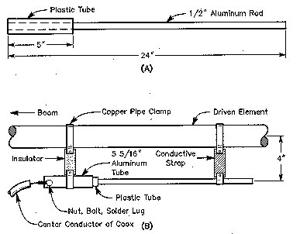Have you ever wondered how much different types of cables weigh? Whether you’re installing new wiring, designing a product, or simply curious, understanding cable weight is important. In this comprehensive guide, we’ll dive into the factors that influence cable weight and provide practical examples to help you estimate the weight of various cables.
Why Cable Weight Matters
Knowing the weight of cables is crucial for several reasons:
- Load Calculations: In construction and engineering projects, the weight of cables must be accounted for to ensure structures can support the additional load.
- Shipping and Handling: When ordering cables in bulk or transporting them, weight impacts shipping costs and handling requirements.
- Product Design: For applications where weight is a critical factor, such as in aerospace or portable devices, designers must carefully consider the weight of cables used.
Factors Affecting Cable Weight
Several key factors influence the weight of a cable:
1. Conductor Material
The material used for the cable’s conductors significantly impacts its overall weight. Common conductor materials include:
- Copper: Copper is the most widely used conductor material due to its excellent electrical conductivity. However, it is also relatively heavy, with a density of 8.96 g/cm³.
- Aluminum: Aluminum is lighter than copper, with a density of 2.70 g/cm³. It is often used as a conductor material to reduce cable weight, although it has lower conductivity compared to copper.
- Silver: Silver has the highest electrical conductivity among metals but is rarely used as a conductor material due to its high cost and density (10.49 g/cm³).
2. Insulation and Jacket Materials
The insulation and jacket materials surrounding the conductors also contribute to the cable’s weight. Common insulation materials include:
- PVC (Polyvinyl Chloride): PVC is a popular choice for cable insulation due to its durability and resistance to moisture and abrasion. It has a density of around 1.2-1.4 g/cm³.
- PE (Polyethylene): PE is lightweight, flexible, and moisture-resistant, making it suitable for various applications. Its density ranges from 0.92-0.97 g/cm³.
- PTFE (Polytetrafluoroethylene): PTFE, also known as Teflon, offers excellent heat resistance and low friction. It has a density of about 2.2 g/cm³.
3. Cable Construction
The construction of the cable, including the number and size of conductors, also affects its weight. Factors to consider include:
- Number of Conductors: Multi-conductor cables, such as those used for audio or data transmission, will weigh more than single-conductor cables.
- AWG (American Wire Gauge): The AWG system is used to specify wire diameter, with smaller AWG numbers indicating thicker wires. Thicker wires generally weigh more than thinner ones.
- Shielding: Some cables include additional shielding layers, such as foil or braided shields, to protect against electromagnetic interference (EMI). These layers add to the cable’s overall weight.
Estimating Cable Weight
Now that we understand the factors influencing cable weight, let’s look at some practical examples of estimating the weight of common cable types.
Ethernet Cables (CAT5/CAT6)
Ethernet cables, such as CAT5 and CAT6, are widely used for network connectivity. Here are some approximate weights for different lengths of Ethernet cables:
| Cable Length | Weight |
|---|---|
| 1-3 ft. | 0.1 lb. |
| 4-6 ft. | 0.2 lb. |
| 7-9 ft. | 0.3 lb. |
| 10 ft. | 0.5 lb. |
| 15 ft. | 0.65 lb. |
| 20 ft. | 0.8 lb. |
| 25 ft. | 0.95 lb. |
| 30 ft. | 1.1 lb. |
| 40 ft. | 1.4 lb. |
| 50 ft. | 1.7 lb. |
Fiber Optic Cables
Fiber optic cables are used for high-speed data transmission over long distances. They are generally lighter than copper cables due to the use of glass or plastic fibers. Here’s a rough estimate of fiber optic cable weight:
| Cable Length | Weight |
|---|---|
| 1 Meter | 0.1 lb. |
| Each meter | add 0.1 lb. |
| Any Meter | 10% of the Length in lb. |
Copper Wire
The weight of copper wire depends on its diameter (AWG) and length. Here’s a formula to estimate the weight of copper wire[4]:
$$Weight (lbs) = frac{D^2 times L}{1000}$$
Where:
- D = Diameter of the wire in inches
- L = Length of the wire in feet
For example, a 1000-foot spool of 12 AWG copper wire (diameter 0.0808 inches) would weigh approximately:
$$Weight = frac{0.0808^2 times 1000}{1000} = 6.53 lbs$$
Online Cable Weight Calculators
To simplify the process of estimating cable weight, several online calculators are available. These tools allow you to input cable specifications, such as material, AWG, and length, and provide an estimated weight. Some popular cable weight calculators include:
- Omni Calculator – Cable Weight Calculator
- Eland Cables – Cable Weight Calculator
- Viatran – Cable Weight Calculator
Conclusion
Understanding cable weight is essential for various applications, from construction and engineering to product design and shipping. By considering factors such as conductor material, insulation, and cable construction, you can estimate the weight of different cable types. Online calculators provide a convenient way to quickly determine cable weight based on specific parameters.
Remember to account for cable weight when planning projects or designing products to ensure proper support, handling, and functionality. By keeping cable weight in mind, you can make informed decisions and optimize your applications.
FAQs
Q: How do I calculate the weight of a cable? A: To calculate the weight of a cable, you need to consider the conductor material, insulation, and cable construction. The weight can be estimated using the formula: Weight = Volume × Density, where volume is calculated by multiplying the cross-sectional area by the length.
Q: What is the weight of a CAT6 Ethernet cable? A: The weight of a CAT6 Ethernet cable is approximately 0.1 lb. per foot (or 0.454 kg per meter).
Q: Where can I find online tools to calculate cable weight? A: Several websites offer online cable weight calculators, such as Omni Calculator, Eland Cables, and Viatran. These tools allow you to input cable specifications and provide estimated weights.


![[Windows 8] How to share Internet connection with your phone, tablet, other computers, and other dev](https://www.800908.com/wp-content/uploads/2021/10/1224-6.png)

